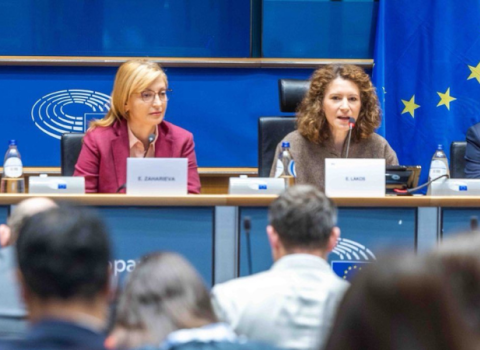Could steel pipes or airplane wings one day repair a surface crack in their own structures, just as white blood cells trigger repair in teh human body to a scratch that has broken the skin? That’s one question researchers at BP’s Centre for Advanced Materials (BP-ICAM) are posing as a ten-year $100 million industry-university partnership funded by BP gets underway.
“The BP-ICAM gives us a pathway to develop critical mass in key fields that will have a real impact,” said BP-ICAM Director Phil Withers, professor of materials science at Manchester University’s Faculty of Engineering and Physical Sciences.
The first ICAM projects focus on three key areas with potentially high impact for industry: structural materials such as new metallic alloys that can work at higher pressures and more extreme temperatures; smart coatings that will enable materials to survive under harsher conditions over longer periods of time, including self-healing materials; and membranes, some of which could be used to desalinate water and separate water from biofuels.
From its base at Manchester University, the research alliance includes Cambridge University, Imperial College London and the University of Illinois at Urbana-Champaign. Its work will focus on seven primary areas of research and support a total of 25 new academic posts, 100 post-graduate researchers and 80 post-doctoral fellows, doing both fundamental and applied research.
Speed and flexibility in partnering
The alliance is off to a speedy start. BP and the four universities began collaborating last September, setting 10 projects in motion. As a result, “Everything was in place when the funding and collaboration agreements came through,” said Withers. That meant the first six post-doctoral students and three PhD students could start work the day contracts were signed, with BP mentors overseeing each project.
That kind of speed and flexibility in partnering can translate into competitive advantage in the global R&D race. “If you want to motivate people, there’s nothing like getting results quickly” Withers said. “In this respect the support of the Dean and the university’s President has been instrumental’.
BP-ICAM’s structure is also unusual. Most industry-university collaborations consist of two partners – a company and a research institute. By forging an international alliance, with Manchester as hub and three world-class universities, BP-ICAM gained critical mass across a range of complementary disciplines.
“All four universities are outstanding. They have world-class facilities and people, and bring different strengths to this programme,” said Bob Sorrell, BP’s Associate Director for the BP-ICAM. The universities will work together on projects, sharing data, technology and personnel.
World-class imaging
Cambridge University, with its world-class expertise in the design of alloys, for example, is leading BP-ICAM research to design a new steel alloy that is resistant to corrosion and hydrogen embrittlement. The work will be done with Manchester, which hosts one of the world’s leading research centres on corrosion.
The University of Illinois has launched a BP-ICAM project to develop materials that can repair themselves, again in collaboration with Manchester, where world-class imaging facilities at the Henry Moseley X-ray Imaging Facility have the capability to observe the self-healing process in 3D at the micro level.
“If you scratch yourself and break the skin, white blood cells come to failure point and repair the skin. That is exactly how these materials work,” Withers said. “They have small capsules that contain material that can repair the crack.” The key is getting the trigger mechanism for the repair process right – so it doesn’t start too early or too late. “If you can’t see the repair process, it is difficult to know if it’s happening. By observing it you can make sure the mechanisms are right,” Withers added.
Meanwhile, Imperial College is spearheading research to develop new membranes that are able to selectively separate oil, chemicals and alcohols from water, offering the potential to significantly reduce energy consumption in water remediation.
Some of the partner universities were already collaborating on new materials research before the alliance began, but BP-ICAM will intensify that effort. Withers has been to the University of Illinois twice in the last six months to kick-off the collaboration on self-healing coatings, and BP has included in the contracts the opportunity for PhD students to spend time working in different labs across the partnership.
Learn from the best
“What will attract the best PhD students to this project is the chance to work not only with world leaders at the BP-ICAM Centre, but also with BP’s researchers and world leaders in the partner universities,” Withers said. “For a young scientist, it’s an opportunity to learn the best from the best.”
In addition, BP is committing researchers to work at each university full time as dedicated mentors to each project. “One of the things that make for the best industry-university relationships is the company’s involvement. The opportunity to work hand-in-glove is really important, since academics are not always aware of the breadth of the business or potential additional applications for a new technology,” Withers said.
BP-ICAM’s hub leadership team at Manchester’s campus, including eleven permanent BP and Manchester staff, inaugurated a fully refurbished building at the beginning of February, as the new BP-ICAM Centre.
Though the first set of BP-ICAM research projects focuses on accelerating the development of novel technologies that can have a high-impact on the energy industry, Withers said fundamental research at the same time will lay the seeds for future advances. “It’s an innovation pathway.”
“If you want to make a step change, you have to develop completely new alloys. That doesn’t happen overnight, it takes place over ten years. So the research has a long-term focus. There is time to develop seeds for the future, such as new alloys with a completely different approach to environmental resistance. It’s rare that you get the opportunity to develop new materials over a long period of time. It’s a real bonus of this project.”





 A unique international forum for public research organisations and companies to connect their external engagement with strategic interests around their R&D system.
A unique international forum for public research organisations and companies to connect their external engagement with strategic interests around their R&D system.